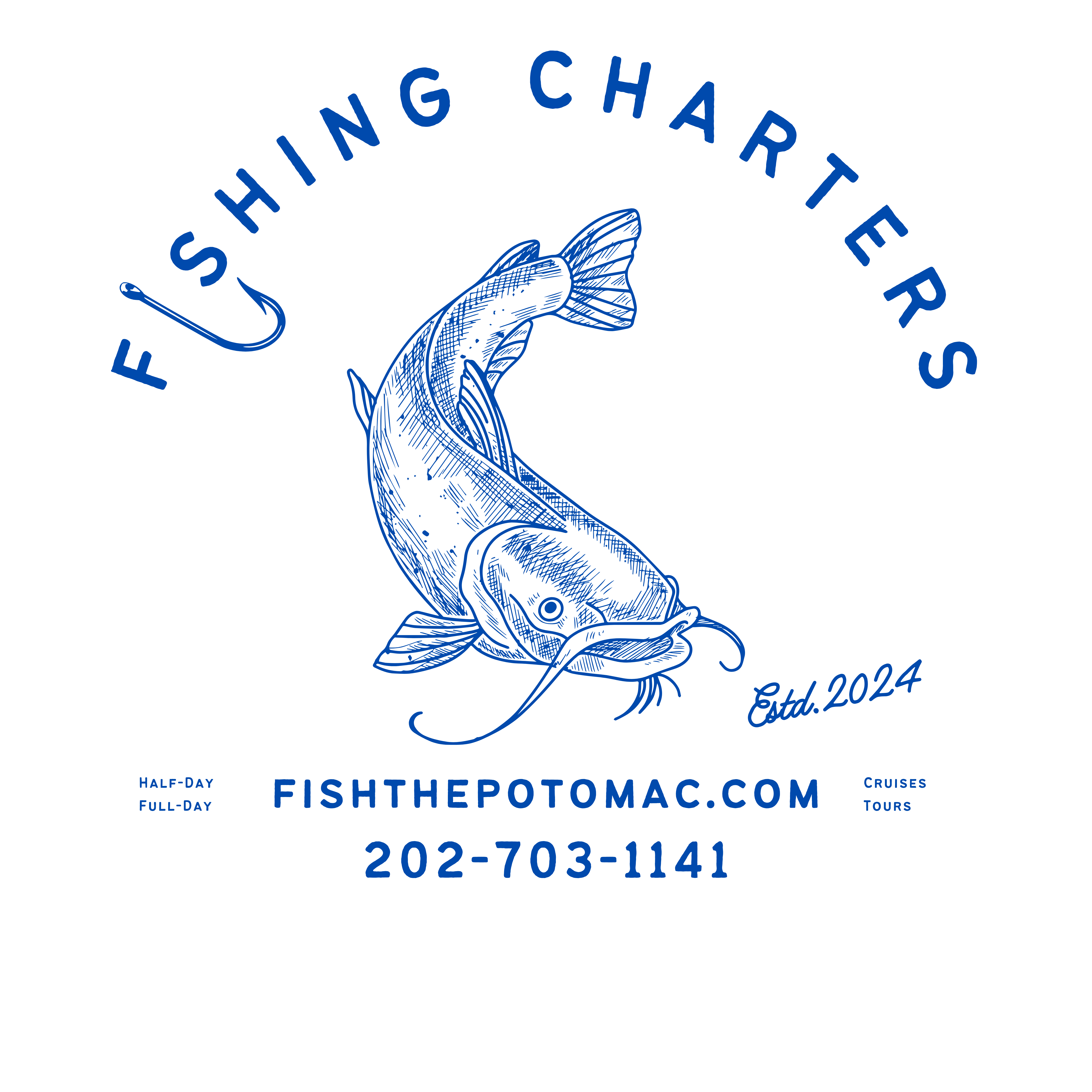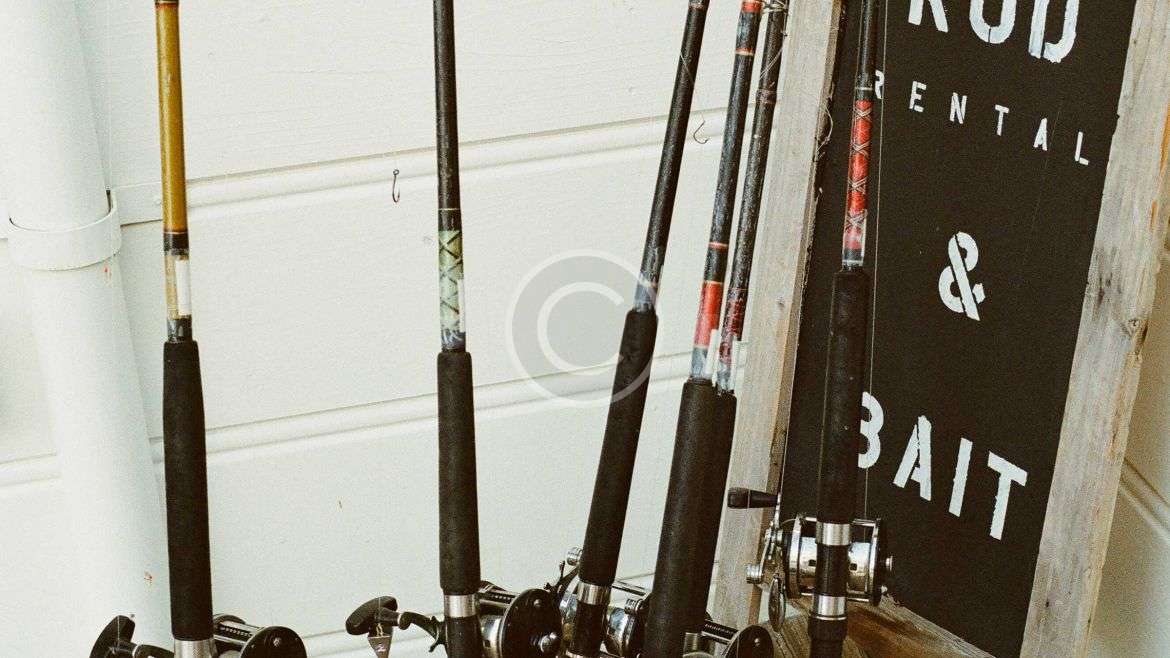Choosing the right fishing rod doesn’t have to be confusing — we’ll help you match your gear to your goals so every cast counts.
Finding the Right Rod for the Job
Walk into any tackle shop, and you’ll see a wall of fishing rods that all look slightly different — some long, some short, some with spinning reels, some with baitcasters. So how do you know which one’s right for you?
At FishThePotomac, we help guests and new anglers understand how rod power, action, and length affect performance on the water. Whether you’re targeting monster blue catfish, lively perch, or trophy bass, the right rod can make or break your experience.
1. Start with Your Target Species
Different fish demand different tools.
- Blue Catfish: Heavy or extra-heavy rods with strong backbones for controlling big fish in current.
- Largemouth & Smallmouth Bass: Medium-heavy rods with fast action for accurate casting and quick hooksets.
- Perch, Crappie, and Panfish: Ultralight to light rods that make small fish feel like giants.
- Striped Bass (Rockfish): Medium to medium-heavy setups with enough flex to cast lures long distances.
Each FishThePotomac charter is equipped with rods tailored to the trip — but if you’re building your own setup, start by asking yourself: what am I fishing for?
2. Understand Power and Action
These two terms get tossed around a lot, so let’s break them down simply.
- Power = how much force it takes to bend the rod (light, medium, heavy).
- Action = where the rod bends (fast near the tip, moderate near the middle, slow throughout).
A fast-action rod gives you more sensitivity and control — great for feeling subtle bites. A moderate-action rodprovides forgiveness for fighting fish that run and jump, like bass or snakehead.
3. Consider Length and Technique
Rod length impacts casting distance and leverage:
- 6’–6’6” rods: Best for accuracy in tight spaces like docks or creeks.
- 7’–7’6” rods: Excellent all-around choice for casting jigs, spinnerbaits, and live bait rigs.
- 8’+ rods: Used for surf or big catfish setups where long casts and deep control are key.
If you’re unsure, we typically recommend a 7’ medium-heavy, fast-action spinning rod as the most versatile choice for the Potomac.
4. Match the Rod to the Reel and Line
Your reel should balance comfortably with your rod — not too heavy, not too light.
- Spinning reels pair best with spinning rods.
- Baitcasting reels need casting rods with trigger handles.
For most local conditions, we run braided line (20–50 lb test for cats, 8–20 lb for bass) with a fluorocarbon leader for invisibility in clear water.
5. Ask the Experts
One of the perks of fishing with us is that you don’t have to guess. We supply top-quality gear and take time to explain why each setup works — so you can build confidence and skill for your own adventures later.
Our captains are happy to show you what to look for when buying your first rod or upgrading your arsenal. You’ll leave knowing not just how to catch fish, but why your gear performs the way it does.
A Rod That Fits You, Not Just the Fish
Every angler has a unique style. Some like to feel every vibration; others want the brute strength to land a monster cat. The key is balance — matching your rod to your species, technique, and comfort level.
At FishThePotomac, we’ll help you find that sweet spot. Because when your gear feels right, every cast feels better — and every catch feels earned.
Ready to Fish Like a Pro?
Book a guided trip with our team and learn firsthand how rod selection changes your results on the Potomac:
choose a fishing rod, fishing rod guide DC, Potomac River fishing gear, best rods for catfish, bass rod selection, FishThePotomac, spinning vs casting rods, fishing setup tips, beginner fishing DC.


Leave a reply